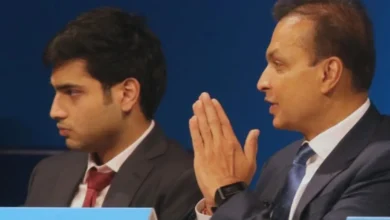Lockdown hit Middle Class hard: Why PM Modi doesn’t give any relief to Middle-Class Individuals? Why GOI is Silent?
The COVID-19 pandemic has left its impact on all sectors of the economy, but nowhere is the hurt as much as middle-class individuals. We looked at the impact of lockdown on farmers, migrant workers, and rural areas, but what about the middle class, especially in urban areas, people sitting at home are often unable to work as they lost their jobs?
Every section of society has been “hurt,” but the maximum damage has been done to merchants, the middle and salaried classes, Rahul Gandhi said.
The lower classes of society didn’t have jobs in the lockdown but in the post lockdown, they have jobs like the maids, the autorickshaw jobs as earlier. The upper classes have no existential worries. It is the middle class that has begun to lose jobs and their worries are increasing day by day. They receive no salary; the government does not provide any tax relief, even when factories start producing, the middle class has no money to consume.
The middle class includes people who earn between five to fifty thousand rupees a month. We are also assuming that some of these people are older people. The lockdown and pandemic that has sapped the economy and caused unprecedented anguish have turned the middle class into the new poor identities of society.

In the past three months, there have been reports of many companies about the layoff of their employees and many others declaring pay cuts. No one thought about what would happen to the middle-class section of society.
While those below the poverty line are receiving some sort of assistance in the form of cooked food, rations schemes, or financial aid from central and state governments or NGOs and philanthropists; but an overwhelming majority of the middle class are left high and dry.
Teachers in unassisted private schools, universities, colleges, office assistants, data entry operators, salespersons, assistant managers in hotels or restaurants, receptionists, estheticians, small business owners, and also those who run small mobile phone services, repair shops, and other service providers who fall in ₹7,000 to ₹35,000 monthly income group, have been badly hit as they lost their jobs and many have not got their salaries in the past four months.
Many categories of mid-level jobs were created for the booming service sector in recent decades. They are mainly employed in the retail, healthcare, teaching, hospitality, travel, and tourism sectors. Most workers of these companies have not received their salaries for three months and have hardly savings to fall upon. Many of them have lost their jobs in the lockdown.
The usual observation is that someone like an autorickshaw driver is poorer than others, but when you look closely, many of them have additional sources of income. His wives work as maids or as some daily wagers, and at least one of his sons works as a mechanic or shop assistant. Therefore, the total income of such a family can amount to ₹ 20,000, which is higher than the average income ₹ 12,000 of people treated as middle class.
Middle-class families have been harshly affected, likely because it depends on the sources of income which are worst affected by the lockdown and the COVID-19 pandemic.
- Many middle-class families depend on the interest of a bank or a post office. Rather than helping people in this pandemic, the government has lowered the interest rate.
- Many people of the middle-class families have not received their salary for April and may not receive another couple of months.
- Restaurants, entertainment centers, and cinemas have been negatively affected, and it will take longer for their businesses to return to normal, says BS Nagesh, founder, Trust for Retailers and Retail Associates of India (TRRAIN).
- People who fall below the monthly income levels of Rs 50,000 are mostly office assistants, data entry operators, salespersons, teachers, vendors, cashiers, assistant managers, technicians, etc. Most of those people who come under this category are sole bread earners for their families.
- The job cuts have been rapid and brutal. Independent stores have reduced their number of staff, delivery executives have been suspended, and a large proportion of workers who belong primarily to the middle class in the supply chain and backend industry have been laid off without pay.
- Salons and spas, which are, by their very nature, business contacts, have also witnessed the ruthless reduction in the workforce, as they have all seen a financial crisis.
- Many people say that we cannot pay school fees because we lost our jobs, we have no alternative source of income. Some people are on furlough.
How will children belong to middle-class families continue their studies? No help has been provided by the government in this case.
The focus of all government and NGO aid programs is on people who are traditionally perceived as poor and who are indeed poor, but middle-class families, who are also in dire need of assistance, have remained excluded.
The government has been recovering the economy by increasing the prices of petrol and diesel but without providing aid to the middle class.

There are many questions that middle-class people want to ask the GOI:
- Why the government doesn’t give any relief to middle-class individuals?
- If middle-class people don’t have cash, then how can they pay taxes, EMIs, loans, rent?
- How will they pay their children’s fees?
- How to manage daily expenses like buying lentils, food?
- Why GOI always do partiality with the middle class and a general category people either in Government exams’ posts, fees, or in schemes like Garib Kalyan Ann Yojana.
- As the industry collapses under losses and begins to fire good people like us, what about the vast insecurity of middle-class people about future jobs? Has the government thought about this?
- In the absence of significant government support, up to 30-40% of middle-class entrepreneurs may close their businesses or require emergency capital injections to maintain displacement.
The incomes of the poorest households decrease less because they work in sectors not affected by the lockdown such as agriculture.
The greatest impact of the pandemic and lockdown on job loss has been seen in the non-essential retail sector such as fashion, lifestyle, accessories, middle-class workers, merchants, salespersons, travel, and tourism products/services retailers’ middle-class businessmen.
Almost 40% of the 60 lakhs employees working in India’s retail sector, rather than the traditional ones, belong to the middle class who could probably lose their jobs in the upcoming months if the government does not intervene.
Reaching out to this section of society with cash or relief materials is not the right way, the NGO or government must collect details of the family’s sole bread earners and transfer the funds to their accounts. Congress had earlier said that the government should take a step forward to help vulnerable and middle-class families.
With shopping malls, retail stores, factories, schools, universities, and other small-scale business ventures remaining closed, economic activity halts, and revenue fall dramatically, it’s been a virtual job bloodbath.
Middle-class individuals want the government to take their financial responsibility like the government of foreign countries, take responsibility for their citizens, and fix their problems.
This is the right time for the government to ensure the middle-class people do not collapse. Because the flourishing phrase of the middle class has been the USP of India. You lose your USP, you have no position in the global market.
Thus, GOI should consider all problems of the middle-class individuals of society and provide some relief to middle-class people.




